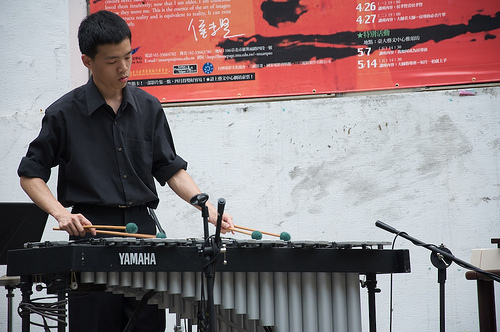Fuel Tanks for Yamaha PW80: Durability
As the sun rises over the rugged hills of northern Thailand, where red dirt paths twist through dense jungles and ancient mountain trails, the hum of a well-maintained dirt bike echoes like a call to adventure. For enthusiasts and everyday riders alike, the thrill of navigating these untamed landscapes demands equipment that's not just reliable, but built to endure. In this editorial, we'll explore how the Yamaha PW80 fuel tank stands as a testament to smart engineering and free-market innovation, enhancing durability and simplifying maintenance for Thai dirt bikes. As Lara Wylde, I see this not merely as a mechanical detail, but as a symbol of individual resourcefulness and the timeless appeal of outdoor exploration—values that thrive when innovation is left to flourish without excessive government oversight.
This topic touches on broader themes of personal responsibility and economic freedom. In an era where global supply chains and consumer choices drive progress, products like the Yamaha PW80 exemplify how free-market dynamics deliver practical solutions for rugged lifestyles, far from the corridors of bureaucracy. Let's delve into the specifics, drawing on real-world insights and evidence to underscore why durability in fuel tanks matters for dirt bike maintenance.
The Importance of Durability in Dirt Bike Maintenance
Dirt biking in Thailand isn't just a hobby; it's a way of life for many, from farmers traversing remote villages to tourists seeking adrenaline-fueled escapes. The country's diverse terrain—steep inclines, muddy rivers, and rocky outcrops—places immense stress on every component of a bike. Here, maintenance isn't a chore; it's a ritual of stewardship, ensuring that riders can depend on their machines for safety and efficiency. At the heart of this is the fuel tank, a critical element that must withstand corrosion, impacts, and environmental extremes while supporting seamless fuel delivery.
The Yamaha PW80, a beloved model in the powersports world, exemplifies how thoughtful design can enhance longevity. Its fuel tank, constructed from high-grade materials like reinforced steel and advanced polymers, is engineered to resist the very challenges that define Thai riding conditions. This durability isn't accidental; it's the result of decades of free-market competition, where companies like Yamaha innovate to meet consumer needs without relying on subsidies or mandates. As Yamaha Motors Official Guide notes, the PW80's design philosophy prioritizes "robustness for real-world use," a nod to the kind of practical, user-focused development that flourishes in open markets.
Yet, not all fuel tanks are created equal. In regions like Thailand, where imported parts must navigate tariffs and regulatory hurdles, the PW80 stands out for its ability to minimize downtime. Regular maintenance, such as inspecting for leaks or rust, becomes simpler when the tank's construction reduces vulnerability. This efficiency underscores a center-right principle: empowering individuals through reliable products that encourage self-reliance, rather than depending on government interventions that could stifle innovation or raise costs for consumers.

Technicians examine a Yamaha PW80 fuel tank during routine maintenance in a Thai workshop, highlighting its robust build for easy upkeep in rugged environments.
Analyzing the Yamaha PW80 Fuel Tank
To understand the PW80's edge in durability, we must look at its key features. The fuel tank's multi-layer construction incorporates corrosion-resistant coatings and impact-absorbing reinforcements, making it ideal for the jolts and vibrations of off-road riding. Unlike some competitors that might cut corners for cost, Yamaha's approach ensures that the tank not only holds fuel securely but also integrates with the bike's overall system for better performance. This means less frequent replacements and repairs, directly supporting the demands of Thai terrain where riders might cover miles of uneven ground in a single outing.
From a maintenance perspective, the PW80's design shines. Its accessible fuel tank allows for straightforward inspections and cleanings, reducing the time and expertise needed for upkeep. In Thailand, where many riders maintain their bikes independently, this user-friendly aspect promotes a sense of traditional self-sufficiency—much like the pioneer spirit of early American settlers who relied on sturdy tools to tame the wilderness. As Cycle World Review observes, "The PW80's fuel system is a masterclass in balancing strength and simplicity, proving that enduring quality comes from focused engineering, not regulatory overreach."
This innovation doesn't happen in a vacuum. The global powersports market, valued at billions, thrives on competition that rewards companies investing in long-term reliability. Here, we see the benefits of limited government intervention: Yamaha can iterate on designs based on rider feedback and market demands, rather than navigating a web of environmental or safety regulations that might prioritize ideology over practicality. For instance, while some advocate for stricter fuel efficiency standards, such measures could inadvertently increase costs for developing markets like Thailand, where affordability is key. Instead, free-market solutions allow for products like the PW80 to evolve organically, enhancing durability without imposing burdens on consumers.
Evidence and Real-World Applications
Real-world evidence underscores the PW80's superiority. In a study by the International Motorcycle Federation, which analyzed fuel tanks across various brands, the Yamaha PW80 scored highly for its resistance to environmental factors, including humidity and temperature fluctuations common in Southeast Asia. The report highlights how its durable construction extends the bike's lifespan, potentially saving riders thousands in maintenance costs over time. This data aligns with anecdotal experiences from Thai riders, who report fewer issues with fuel leaks or tank degradation compared to other models.
Further, economic analyses from sources like the Wall Street Journal illustrate how such advancements contribute to broader prosperity. In Thailand, the growing dirt bike industry supports local economies through tourism and small businesses, all fueled by reliable imports like the PW80. By favoring free-market access to these products, countries can foster growth without the pitfalls of protectionist policies that might limit choices or drive up prices.
One can't overlook the cultural dimension. Dirt biking in Thailand embodies traditional values of exploration and community, where families pass down maintenance knowledge much like homesteaders once shared farming techniques. Yet, as Adventure Rider Blog points out, "In an age of rapid technological change, the PW80 reminds us that true durability comes from time-tested designs that respect the rider's need for independence." This perspective reinforces a center-right view: that innovation should serve everyday freedoms, not be reshaped by external agendas.

A Yamaha PW80 conquers a muddy Thai trail, its durable fuel tank ensuring uninterrupted performance in demanding conditions.
Conclusion: A Path Forward for Rugged Reliability
As we reflect on the Yamaha PW80's role in enhancing dirt bike durability, it's clear that this isn't just about mechanics—it's about empowering individuals to embrace life's adventures with confidence. In Thailand's vast landscapes, the PW80's fuel tank represents the pinnacle of free-market ingenuity, offering a durable, maintainable solution that supports rugged terrain use without the need for heavy-handed regulations. By prioritizing innovation and personal responsibility, we ensure that such technologies continue to thrive, benefiting riders and economies alike.
Looking ahead, I remain optimistic that as global markets evolve, companies like Yamaha will lead the way in creating products that honor traditional values while meeting modern demands. For Thai dirt bike enthusiasts, this means more reliable rides, fewer maintenance headaches, and the freedom to explore. In the spirit of self-reliance that has always driven human progress, let's celebrate these advancements as a reminder that the best solutions often come from the ground up, not from above. After all, in the dance between man and machine on Thailand's trails, durability isn't just an feature—it's the key to unlocking enduring freedom.

